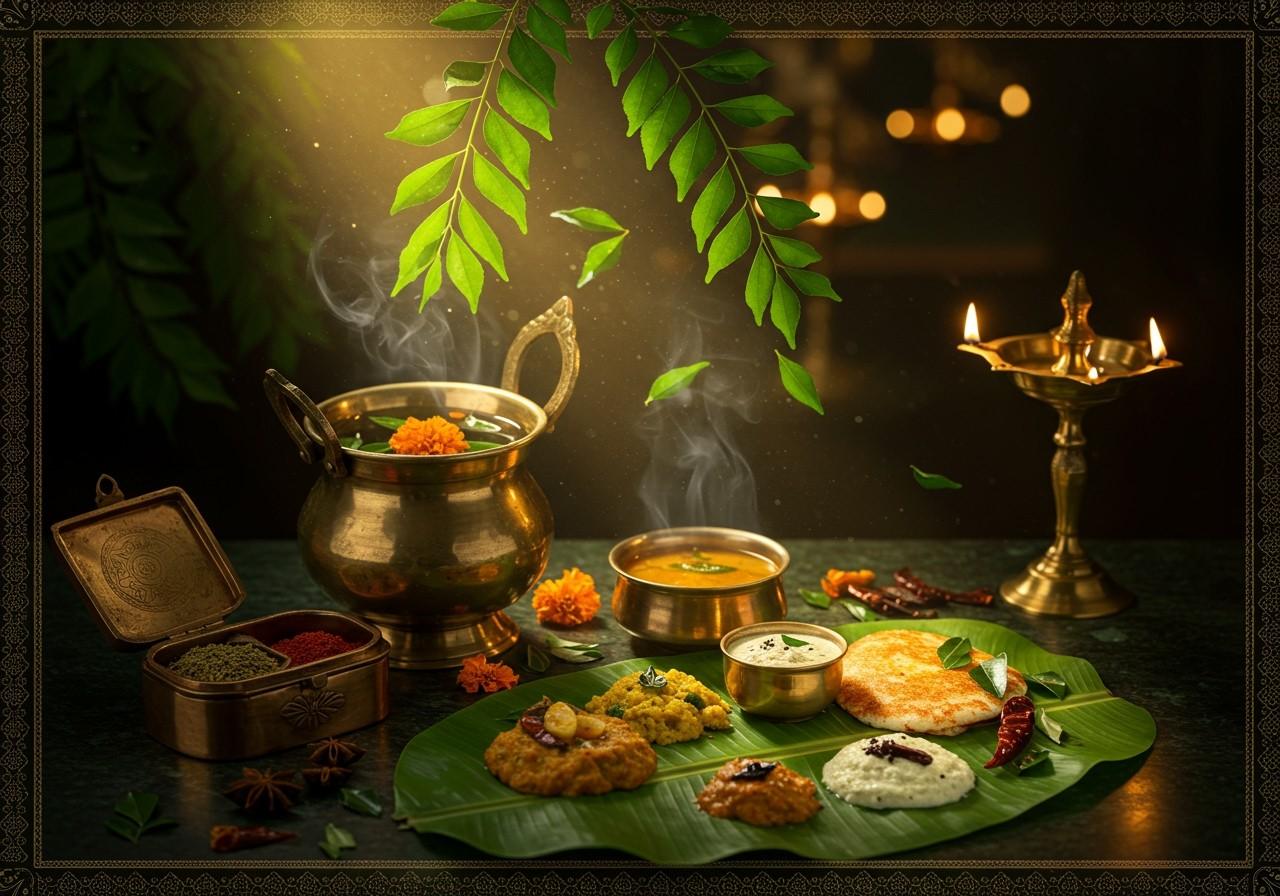
Curry leaves, a staple in Indian kitchens, are renowned for their distinct aroma and flavor. This blog post delves into their journey from harvest to plate, exploring their significance in Indian cooking, their beneficial properties, cultural importance, and practical uses.
History and Origin of Curry Leaves
Curry leaves, scientifically known as Murraya koenigii, are indigenous to India and Sri Lanka. Their culinary use dates back centuries, featuring prominently in traditional dishes across diverse regions. They hold cultural significance, enriching regional specialties like sambar in Tamil Nadu and chutneys in Andhra Pradesh. Ayurveda, the traditional Indian medicine system, values curry leaves for their medicinal qualities, believing they aid digestion and boost overall well-being. Through trade and migration, their use has spread globally, becoming a familiar ingredient in numerous South Asian kitchens.
Why Curry Leaves are Used in Indian Cooking
Curry leaves impart a unique flavor profile to Indian dishes, characterized by a slightly bitter, citrusy note. When sautéed in hot oil, a common practice known as tempering, they release fragrant essential oils that elevate the aroma of the food. This tempering process is fundamental to many Indian culinary traditions. Furthermore, curry leaves are nutritionally rich, packed with antioxidants, vitamins, and minerals, which contribute to digestive health and offer anti-inflammatory advantages. Their versatility shines through their presence in a wide array of dishes, from curries and chutneys to flavorful snacks, solidifying their indispensable role in Indian cooking.
Can Curry Leaves Be Eaten Raw?
While curry leaves can be consumed raw, cooking them is more common as it enhances their flavor and aroma. Eating them raw offers potential health benefits, such as improved digestion and reduced cholesterol levels. Traditional practices often incorporate raw curry leaves into herbal remedies. However, thorough washing is crucial to eliminate any pesticide residues. It’s worth noting that the taste of raw curry leaves differs from their cooked counterparts, exhibiting a more pronounced bitterness and a less intense aroma.
Why Curry Leaves are Sticky
The sticky texture of curry leaves is attributed to the presence of essential oils and resins. This stickiness can influence handling and cooking processes, but it also plays a vital role in releasing their characteristic flavors during sautéing. Drying or frying alters the texture, reducing the stickiness. For optimal flavor and aroma, fresh curry leaves are recommended. To preserve freshness and minimize stickiness, store them in an airtight container in the refrigerator.
Cultural Significance and Ritual Use of Curry Leaves
Curry leaves hold cultural and religious significance in India, often used in traditional rituals and offerings during festivals and ceremonies. Regional variations exist in the specific practices involving curry leaves, including their use in folk medicine and home remedies. Cultivating curry leaves at home fosters sustainability and connects individuals to their heritage.
Using Curry Leaves: Tips and Techniques
Curry leaves are commonly used in South Indian cooking for tempering dishes, providing a distinctive background note. They are added to hot oil to release their flavor and can be used fresh or dried. Dried curry leaves can be stored for up to a year in a vacuum-sealed bag. Curry leaves are also nutritious, being rich in fiber, minerals, and vitamins. They can be used in various ways, such as flavoring oils, infusing liquids, or making curry leaf powder.
- Tempering: The most common use, where they are added to hot oil or ghee along with other spices to infuse dishes with flavor.
- Infusion: Add a few curry leaves to boiling water to create a flavorful and aromatic tea.
- Curry Leaf Powder: Dry and grind curry leaves into a powder to use as a spice in various dishes.
- Flavoring Oils: Infuse oils with curry leaves by gently heating them together, then strain and store the oil.
Get Your Cooking Essentials from Poojn.in
At Poojn.in, we are dedicated to providing a wide selection of traditional Indian cooking ingredients to elevate your culinary creations. While fresh curry leaves are not currently part of our inventory, we offer other essential spices and ingredients like Char Magaz (watermelon seeds), which adds a unique nutty flavor and nutritional value to Indian dishes. Our Char Magaz is available in various quantities (100g, 250g, 400g, and 900g) and is offered raw, wax-free, and unpolished, suitable for both cooking and traditional applications.
Explore our Jaribooti (Ayurvedic Herbs) section and Holy Food category at www.poojn.in to discover more authentic Indian cooking ingredients. We meticulously source and quality-check all our products to uphold the highest standards of purity and authenticity.
Green Mung Dal, Supari (Areca Nut), Large Size Elaichi (Black Cardamom), Gulal Abeer (Five Color), and Camphor Dust are some of the products you can find.
Shop for Char Magaz at Poojn.in
Prices range from ₹71.00 to ₹599.00 based on quantity.
Conclusion
Curry leaves transcend their role as a mere ingredient; they embody the richness of Indian culinary heritage. From their ancient origins to their continued presence in contemporary kitchens, they weave a compelling narrative. They enrich dishes with distinctive flavors, offer a range of health benefits, and carry cultural and religious significance. Whether used in tempering a curry or as part of a traditional remedy, curry leaves connect us to time-honored traditions and elevate our culinary experiences. Embrace the magic of curry leaves in your cooking and savor the harmonious blend of taste and tradition they bring to your table.


